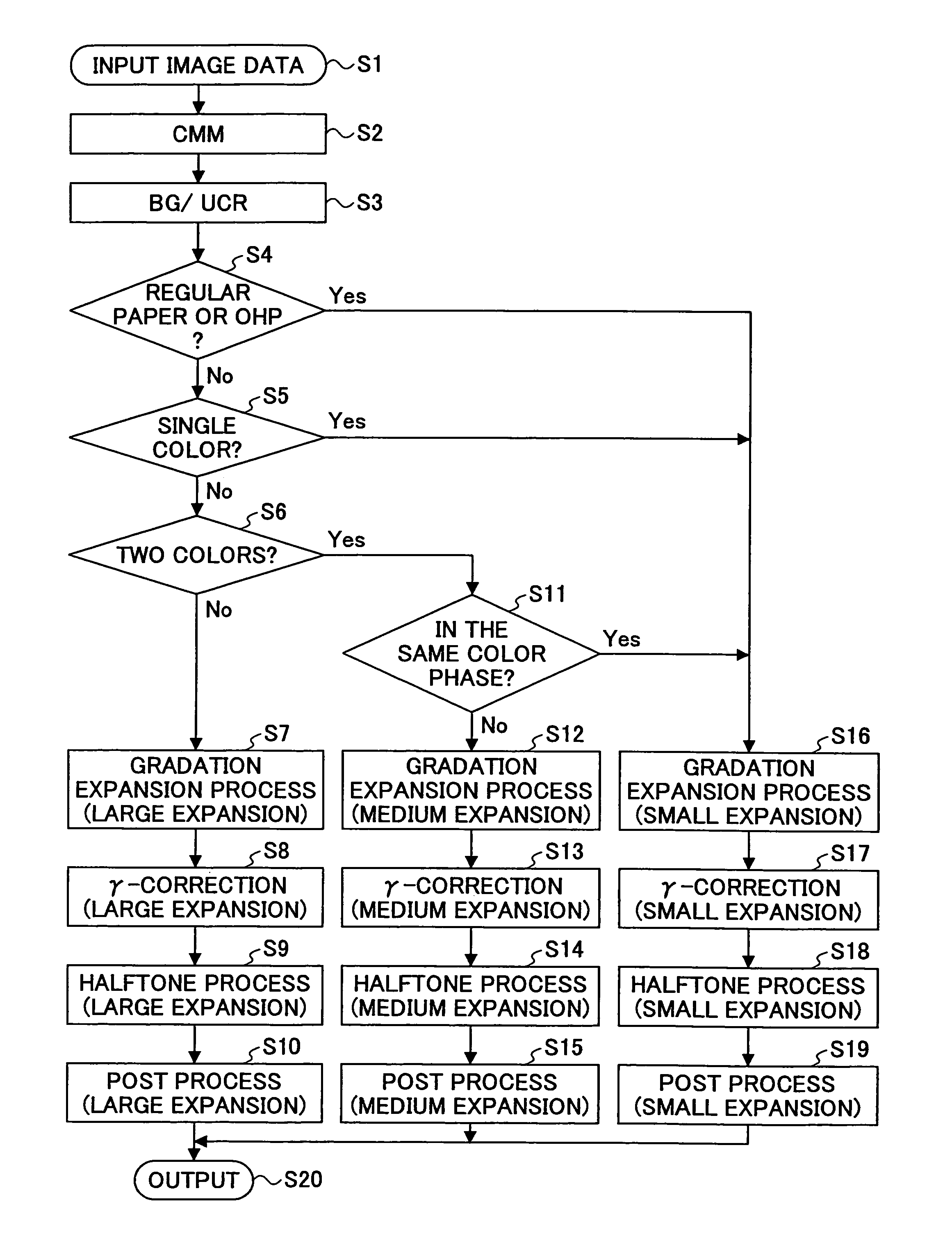Image processing method and apparatus, image forming apparatus and system, program and recording medium
a technology of image processing and image forming, applied in the field of image data processing techniques, can solve the problems of increasing the amount of information, not being able to use all 256 gradations in practice, and not being able to mention gradations
- Summary
- Abstract
- Description
- Claims
- Application Information
AI Technical Summary
Benefits of technology
Problems solved by technology
Method used
Image
Examples
Embodiment Construction
[0051]A description will now be given, with reference to the drawings, of an embodiment of the present invention.
[0052]FIG. 3A is a perspective view of an inkjet head of an inkjet (IJ) printer. FIG. 3B is an illustration for explaining an operation of the inkjet head shown in FIG. 3A. As shown in this FIG. 3A, the inkjet head 30 comprises a head unit 31 (yellow Y), a head unit 32 (magenta M), a head unit 33 (cyan C) and a head unit 34 (black K). As shown in FIG. 3B, the inkjet head 30 injects ink droplets from ink nozzles provided to each of the head units 31 to 34 onto a recording paper 36 so as to record an image on the recording paper 36.
[0053]It should be noted that although the head units 31 to 34 corresponding to four color components of CMYK are shown in the figures, there are developed recently an inkjet head having an additional head unit corresponding to light ink such as light cyan (or photo cyan), which is brighter than conventional cyan, light magenta (or photo magenta)...
PUM
 Login to View More
Login to View More Abstract
Description
Claims
Application Information
 Login to View More
Login to View More - R&D
- Intellectual Property
- Life Sciences
- Materials
- Tech Scout
- Unparalleled Data Quality
- Higher Quality Content
- 60% Fewer Hallucinations
Browse by: Latest US Patents, China's latest patents, Technical Efficacy Thesaurus, Application Domain, Technology Topic, Popular Technical Reports.
© 2025 PatSnap. All rights reserved.Legal|Privacy policy|Modern Slavery Act Transparency Statement|Sitemap|About US| Contact US: help@patsnap.com



